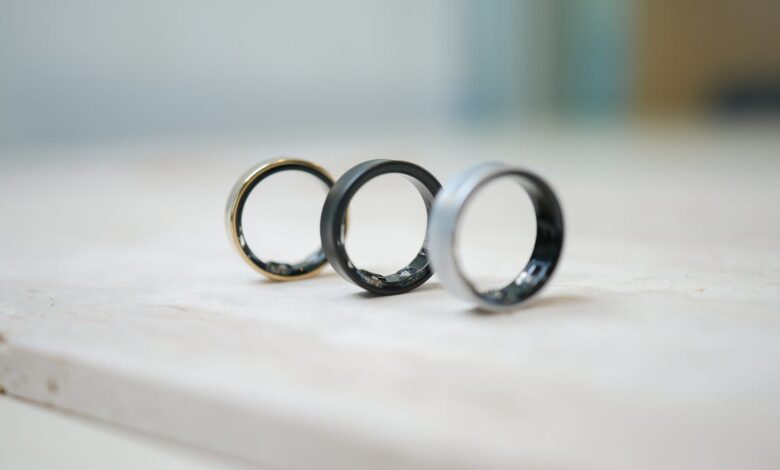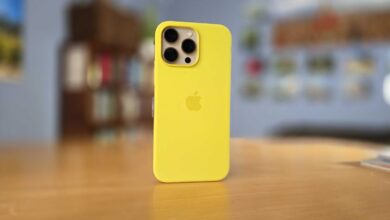We’ve Entered the Age of the Smart Ring. Here’s Why It’s Going to Shake Up the Wearables Market


Samsung took the smart ring space to the next level when it announced its first product Galaxy Ring at its Galaxy Unpacked July 2024 event in Paris. The smart ring promises health and sleep tracking features that can record your activities during the day and your sleep at night to get a comprehensive picture of your health.
Also: Samsung Galaxy Ring Hands-On: Why I Ditched Oura for This Competing Wearable
Smart rings are not a new technology, but before Galaxy Ring LaunchThey’re niche enough, in fact, that I use the smart rings I test as easy conversation pieces at any party. When acquaintances see Oura Ring glowing green around my index finger, they were confused and curious. This is still a product I have to explain to my 20-something friends — the so-called early adopters of cutting-edge technology.
After the Galaxy Ring launches, I have a feeling I won’t have to explain much more about smart rings. These wearables are about to become much more mainstream, or as a Samsung spokesperson put it at the Unpacked event, “set a new standard for wearable health.” By 2032, the smart ring market is expected to grow to more than $1 billion, according to a recent report. DataHorizon Research report.
Also: How we test smart rings
Put down the smartwatches and fitness trackers: Smart rings are about to become the hottest new accessory in tech, and I couldn’t be more excited. Here’s why.
The past decade has been marked by smartwatches with flashy screens that have become — literally — extensions of our smartphones. As smartphones have become ubiquitous for everything from hailing rides and renting vacations to meeting up with lovers and mobilizing for political rallies, our smartwatches have become our smartphones’ secretaries.
Smartwatches answer phone calls (not as well as smartphones, as every call to my mom, who often answers on her Apple Watch, reminds me), provide a medium format for other forms of communication (like texting), wake you up in the morning, measure your heart rate and body temperature, and generally help when you can’t reach your phone — or add the ability to collect biometric data that your phone can’t record.
Also: The Best Smart Rings You Can Buy
But as screens take over our phones, wrists, refrigerators, cars, and more, people are starting to get screen time overload. The pendulum is swinging back: People still want the tech—body temperature checks, sleep scores, and heart rate profiles—but they don’t want another screen to see it all. We’ve had enough of that! Wearables used to be all-encompassing, but the recent trend toward smart rings, more discreet, one-time pieces of tech, proves otherwise. People want a device that does one thing exceptionally well.
“There is value behind the idea of a device that primarily functions as a standalone health tracker, unlike today’s smartwatches, which can do everything from monitor heart rate to act as a miniature phone or digital car key,” Lisa Eadicicco of CNET writes.
Oh, and what’s another advantage of a screenless, single-purpose wearable? You can get a week’s worth of battery life, compared to the all-day battery life of a smartwatch.
The benefits of a single-purpose product are one reason to be excited about smart rings. Another reason lies in the widespread adoption of the technology. Rumor has it that Apple has been courting with a smart ring of its own, and so on. Fitbit is owned by Google.
Samsung’s entry into the smart ring market will only open up the playing field for more companies to launch their own rings, increasing competition. Samsung’s Galaxy Ring, for example, has shaken up the smart ring space, notably with its no-subscription model, challenging the industry mainstay Oura smart ring and its mandatory $6-a-month subscription even after you’ve paid $300 for the device. The Oura Ring is widely considered the best smart ring, but owners have a common complaint: You have to pay a lifetime subscription fee to access your biometric data.
Also: Samsung’s $399 doesn’t require registration. Oura, take note.
I call Samsung’s unregistered move “Welcome to the evolution for customers who spend $200 or more on a smart ring“For its part, Oura says its subscription model allows for continued investment in research and new features, but if more competing brands launch subscription-free rings, Oura may have to change its model. Competition is often good for customers, and the smart ring space is about to get seriously competitive.
The final reason I want to see smart rings on everyone’s fingers is a little superficial. Smart watches are ugly, in my opinion. They’re loud, and the bands don’t match most outfits. Unless you invest in a variety of watch bands to match every outfit you wear, smartwatches stand out. They’re also bulky.
Smart rings, on the other hand, can blend in. Sure, you might have to worry about gold and silver clashing, but that’s better than a blaring watch with a loud neon silicone band. The discreet design of smart rings also makes for a discreet wearable that can blend in with the other jewelry and accessories you wear.
We are witnessing a pivotal moment in the smart ring space and while smart rings are an emerging market, I believe this will be the year they are finally considered a niche market.
I better make as much small talk at parties as I can while my friends are still new. Who knows what weird wearables I’ll be talking about next year. Anyone want a brain chip?




